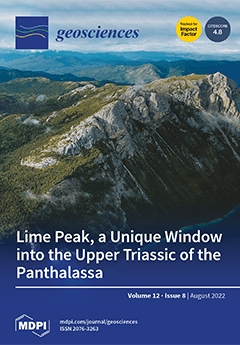One of the largest assemblages of living marine microbialites, with shapes and sizes analogous to ancient structures, is found along the margins of Hamelin Pool, Shark Bay, Western Australia. An investigation of microbial mats on the surfaces of these structures using petrographic analysis,
[...] Read more.
One of the largest assemblages of living marine microbialites, with shapes and sizes analogous to ancient structures, is found along the margins of Hamelin Pool, Shark Bay, Western Australia. An investigation of microbial mats on the surfaces of these structures using petrographic analysis, light, and scanning electron microscopy identified the in situ precipitation of micrite as an important accretion mechanism in all major mat types (pustular, smooth, and colloform). Within each mat type, peloidal micrite, composed of nano-bulbous spheres to tabular and rod-shaped crystals, was closely linked with cells of the coccoid cyanobacterium
Entophysalis, and microtextures of the micrite reflected the size and distribution of
Entophysalis colonies. In pustular surface mats, where large colonies of
Entophysalis were common, large clots of micrite were distributed randomly throughout the mat. In contrast, in smooth and colloform mats, where smaller colonies of
Entophysalis were distributed along horizons, micrite formed fine laminae. In all surface mat types, micrite associated with
Entophysalis had a characteristic honeycomb appearance, resulting from cell and/or colony entombment. These findings redefine our understanding of microbialite accretion in Hamelin Pool, recognizing the importance of microbial micrite in microbialite growth and showing that coccoid cyanobacteria are capable of building laminated structures. Moreover,
Entophysalis, the dominant visible microbe associated with the precipitation of micrite in Hamelin Pool, has a lineage to
Eoentophysalis, found throughout early and middle Proterozoic microbialites assemblages. These findings reinforce the importance of Hamelin Pool as a window to the past.
Full article





